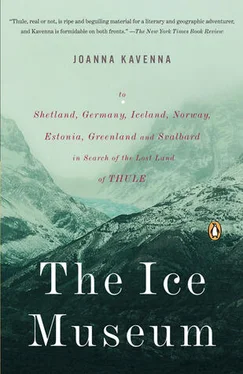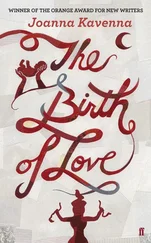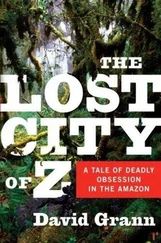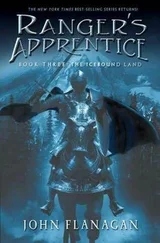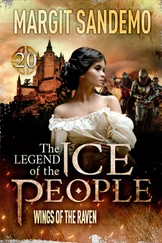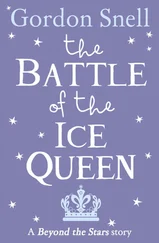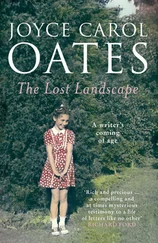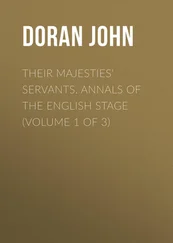The sun was fading when I reached the Residenz. As the sky became sallow I walked through the Hofgarten, a small palace park. There was a Diana temple in the centre, where a lone busker was playing the violin. I trod on gravel, passing low hedges and pruned trees. There was a fence, its posts shaped like treble clefs, running through the park. The steady sound of footsteps echoed around the cloisters. The Residenz complex was being built as early as the fourteenth century, and a long line of prince-electors and later kings contributed their designs to its shape. After Maximilian IV Joseph declared Bavaria an independent kingdom at the beginning of the seventeenth century, the palace became increasingly opulent. Much of it was the work of Leo von Klenze, working through the nineteenth century, taking his influences from neoclassicism. The Wittelsbachs left it all behind at the end of the First World War. The last Wittelsbach king left Munich even before Kaiser Wilhelm II abdicated from the German throne in Berlin. The Wittelsbachs tripped down the stairs of their stone palace, past the stylish trompe l’oeil designs, abandoning rooms of family treasure and luxurious suites furnished with classical statues, moving through their dark courtyards, the stonework casting grotesque shadows. They closed the doors and left the palace to the crowds.
The Residenz swiftly became a museum. The National Socialists left it alone even as they began the building of ‘temples’ and monuments throughout Munich. But the war destroyed the place; in 1944 the Residenz was gutted by fire after a bombing raid on the city.
Inside, the restored rooms were vast treasure chambers. The ceilings gaped. There was a grotto with thousands of seashells stuck into the stone and a bronze statue of Mercury at the centre. The vaulting of the hall showed faded paintings, traces of past finery, fragmented scenes from Ovid. The windows were scratched and ancient, twisting the light, warping the view of the courtyards. There was a lot of fine wood in the place: beautiful cabinets in rose-wood with a dozen secret compartments and tables decorated with intricate carvings and enamel pictures of Venice. In the Antiquarium, a long tunnel-like room, looking like an underground station with arched windows, there were classical busts lining the walls. The colours on the ceiling were subdued, because of damage during the Second World War, said a guide. But there were grotesque pairs of putti cavorting on the ceiling, and sketchy portraits of Bavarian cities and castles. The busts were of old Romans—a chronological series of imperial families. There were the wives, daughters and ancestors of Augustus, Gaius Julius Caesar’s women, Nero’s wives, the wives of Galba, Otho, Vitellius and Vespasian. Then there were the emperors, from Julius Caesar to Valerian, some of them with the names mixed up, a few losses sustained to the series. It was a grandiose piece of cataloguing, a decorative triumph for ambitious regional rulers. Among the emperors were random classical statues—a Hellenistic torso, a head of Hermes, a Diana with a broken nose, and an Aphrodite. There was a wooden fireplace, with the date of completion of the room carved onto it—1600—and the name of the man who finished it all, Duke Maximilian I.
There were rooms leading into further rooms, opulently decorated with trompe l’oeil ceilings, and pictures of Napoleonic battles. There was a portrait of Ludwig I, staring benevolently at his riches. There were rooms filled with plates, plates with Roman heads on them, plates with rustic scenes of girls under bowers and cherubs, plates with Bavarian views on them. Rooms full of gold and silver in cabinets, candlesticks and serving dishes, everything slightly tarnished. There were rooms decked in tapestries, showing hunting scenes in forests. There was an audience room, with its walls coated in portraits of worthy peasant labourers, scything crops and tending cattle like virtuous subjects. There were stone rooms, with their floors coated in marble and everything else in muted shades of grey and blue and dark red. There were painted allegories—of the four seasons, of the elements, of the universe, of the church. There had been a painted allegory showing man as the conqueror of nature, but it was destroyed in 1944. There were great empty tables, cold fireplaces, everything sealed off, guarded by figures in uniforms.
There were rooms kept in semi-darkness, covered with faded tapestries showing battles and high points in the history of the Wittelsbach family. There were rooms which were almost empty, their furniture lost, except for a single sumptuous object, like a table with carved lion paws and a bestiary of mythical winged creatures for decoration. There were suites full of tortoiseshell cabinets, there were rooms plastered with gold paint, their ceilings lavished with pictures of putti riding horses, putti riding lions, putti holding onto other putti, putti playing with hearts, putti gambolling in every florid way available. The quantity of treasure was hard to absorb; I found myself walking swiftly past jewel-encrusted cabinets and delicately restored furnishings, simply because it was impossible to stand solemnly in front of everything. In the family gallery the Wittelsbachs stared from their portraits, ringed around with gold paint. Straight-backed men in fur-lined robes, sporting hats and beards as fashions required, and their wives, staring out at the empty room.
I passed through these quiet rooms, past red and gold walls, thrones standing unoccupied, a royal bedroom with the bed sealed off by a golden fence, with a chandelier glinting in the centre, and a craven overload of gilt everywhere on the walls, around the mirrors, around the portraits, splashed across the ceiling. I passed into what had once been the royal apartments of Ludwig I and his queen. There were paintings on the walls of mythical creatures, sphinxes and griffins, and then monarchical battle paraphernalia. History and power, the message was clear from the faded walls of the royal apartments. The command of symbols and former myths. Ludwig I’s throne room had been neatly restored, with red curtains suspended around the throne and the ceiling patterned in Greek motifs. The parquet floor was polished. The walls were coated with classical columns and stucco reliefs, showing figures from Homer and Hesiod and Pindaric athletes in competitions.
Ludwig I had established a collection of classical statues in Königsplatz, called the Glyptothek, one of the buildings Hitler took for his backdrop. I was thinking of the Glyptothek as I walked out of the Residenz, passing through a gallery of portraits of the royal house. The Glyptothek is crammed full of Greek and Roman sculptures, originals and copies. I had been there on an earlier trip to Munich, spending an afternoon in the rooms. Everything in the Glyptothek has been mutilated by the passage of time; the statues stand, compelling despite their cracks and broken limbs and the sense of creeping decay hanging over them. There’s an almost complete statue of a sleeping faun from the third century B.C., with huge thighs and calves and a hand slung behind its head. One foot has gone, one arm has vanished, but the legs are perfect, delicately fashioned. There’s a room filled with statues of headless women—an Aphrodite, an Athena, the folds of their robes still immaculate. In a room surrounded by heads and trunks there’s a statue of the dead son of Niobe, from roughly the time Pytheas sailed. The figure lies on its back, footless and handless, frozen in a backwards arch of death.
They were the remnants, fragmented forms of an ancient version of beauty. I was thinking about these fragments as I walked back from the Residenz to my hotel. Shattered parts of the past, somehow preserved, even in this city where everything burned. In the Glyptothek there are the remains of a temple to Athena: the broken stones of a pediment, put back together again. Athena stands in the centre, determining the fate of men, surrounded by headless warriors, warriors sadly deprived of limbs, made up from bits and pieces, some of them nothing but a couple of shins and feet. It is a stark piece of symbolism: these warriors, represented by a few salvaged parts, reduced from portraits of physical perfection to synecdoche. The temple has been tacked together, left in a foreign museum, far from its original site.
Читать дальше
